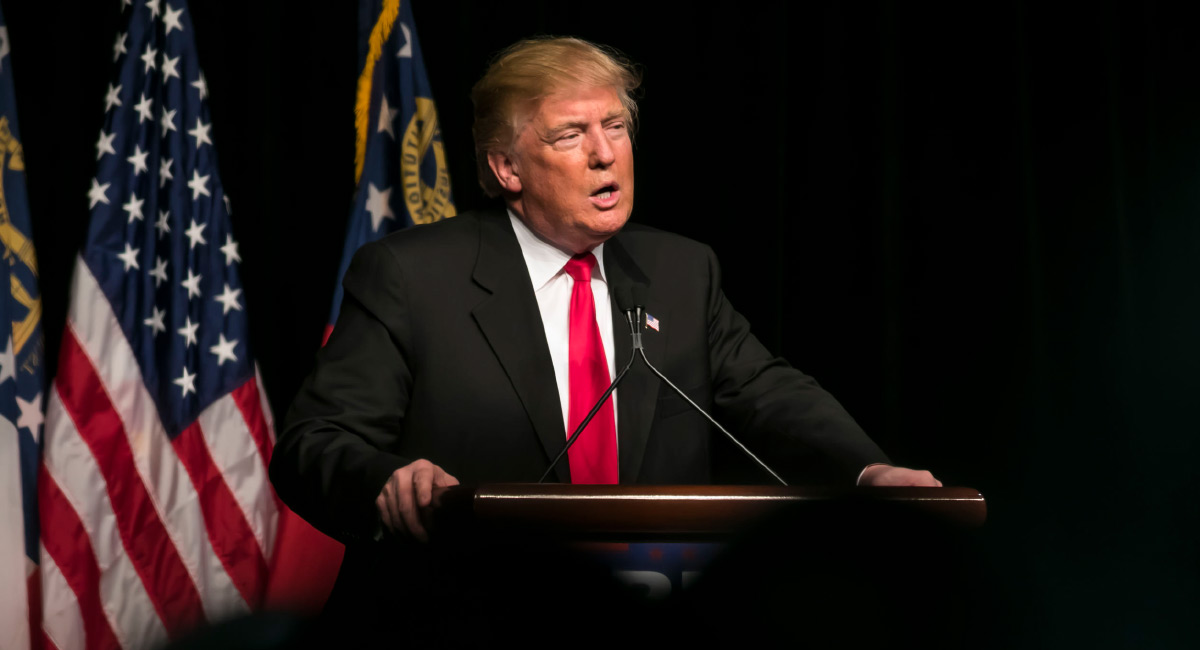President Trump has astonishingly declared, “Article II (of the U.S. Constitution) gives me the right to do whatever I want.”
Statements like this have probably contributed to his current impeachment predicament. And Alan Dershowitz, one of his defenders in the Senate trial, has thrown gasoline of the same fire with the jaw-dropping assertion that “the president’s far more powerful than the king. The president has the power that kings have never had.” He added, “He has a very, very powerful office, and the framers wanted it that way.”
Not so much. Trump has either not read the Constitution or is distorting it for his own purposes. Dershowitz, a self-professed “liberal Democrat” and famous criminal defense attorney, has taken it upon himself to write several books on the Constitution that espouse the unitary theory of the executive—a theory of an uber-powerful president that bears no resemblance to the text of the Constitution or history surrounding the nation’s founding.
In a republic, how did we get to the surrealistic and dangerous juncture of a president claiming the unlimited powers of a dictator and his legal echo chamber claiming that the Founders created an office that was more powerful than that of a monarch, such as the one that the nation’s founding generation had tossed aside by revolution? Curiously, it is not all Trump’s fault. In fact, the creation of the Imperial Presidency can be laid at the feet of Dershowitz’s liberal Democrats.
The Founders had first rebelled against the increasingly powerful monarchy of George III of Britain and then instituted a loose, decentralized association of states under the Articles of Confederation, which didn’t even have an executive because of fears of tyranny. The Founders then discovered that the tyranny of majorities in state legislatures trampled on the rights of minorities. At the Constitutional Convention of 1787 and the subsequent creation of the Bill of Rights, the framers decided to minimize the chance that tyranny would reign by creating three branches of government—the Congress to pass laws, an independent but modest executive who would merely carry out Congress’s wishes at home and abroad, and a judiciary that would interpret Congress’s laws in disputed cases—designed to clash so that no branch or individual could be become too powerful.
The Constitution’s framers were increasing the power of the central (federal) government compared to that under the Articles of Confederation, but they still tried to limit it by strictly specifying (enumerating) the specific powers of each branch of it.
Congress was still given the bulk of the new government’s enumerated powers, including in foreign policy and national security, with the executive given only the power to implement and execute Congress’s laws domestically and manage troops on the battlefield as commander in chief in any war Congress had initiated.
The president was also given shared powers with Congress in appointing senior people to government positions and establishing treaties with foreign governments. Even the executive’s most potent power—the right to veto congressionally passed legislation—was a limited one that could be overturned with a two-thirds’ vote of Congress.
For more than a hundred years, the chief executive, with a few notable exceptions, remained the modest office that its title of “president” (as opposed to the more potent, but rejected, title of “governor”) indicated—up to the Spanish-American War at the dawn of the 20th century.
The wars of the new century began to expand the power of the presidency outside the modest bounds of the original office envisioned by the Constitution’s framers. Woodrow Wilson, a Bourbon (limited government) Democrat turned progressive, began the aggrandizement during World War I. The war model was brought back during peacetime to “combat” the Great Depression and was expanded by Franklin Delano Roosevelt to fight World War II. The liberal FDR used fictitious “inherent” powers of the executive, not enumerated in the Constitution, to trade U.S. warships for British bases, deploy troops to Iceland, and run an undeclared naval war against German submarines even before the attack on Pearl Harbor.
FDR’s successor, Harry Truman, created what has been termed the “imperial presidency”—a powerful executive abroad with it bleeding back into domestic affairs as well—by marrying “inherent” powers with a new beefed up national security structure around the president, for example, the creation of the National Security Council and the CIA.
To blame liberal Democrats solely for the dramatic expansion of the power of the presidency would be unfair, however. During the long 20-year run of liberal Democrats FDR and Truman, the GOP claimed to be for restoring Congress’ constitutional power to push back against the executive. However, as Republicans—such as Eisenhower, Nixon, Reagan and the Bushes—began to win the presidency again, they became as much or more proponents of bloated executive power as Democrats.
In fact, taking advantage of the 9/11 attacks, Republican George W. Bush claimed that during such emergencies he didn’t have to follow congressionally passed laws, could conduct unconstitutional surveillance on American citizens, could jail people indefinitely without trial and the ability to challenge their detention, could torture prisoners, and could eliminate the constitutional guarantee of a jury trial by trying terror suspects in kangaroo military tribunals. Bush thus created an imperial presidency on steroids that has gone “rogue.”
His successors, Barack Obama and Trump, have continued the irresponsible rhetoric and actions of an executive long swollen from the office the framers had intended.
Much of this presidential amplification is a result of congressional abdication. We finally see some congressional push back now, but it may be too little, too late to avoid the tyranny the framers most feared.

















